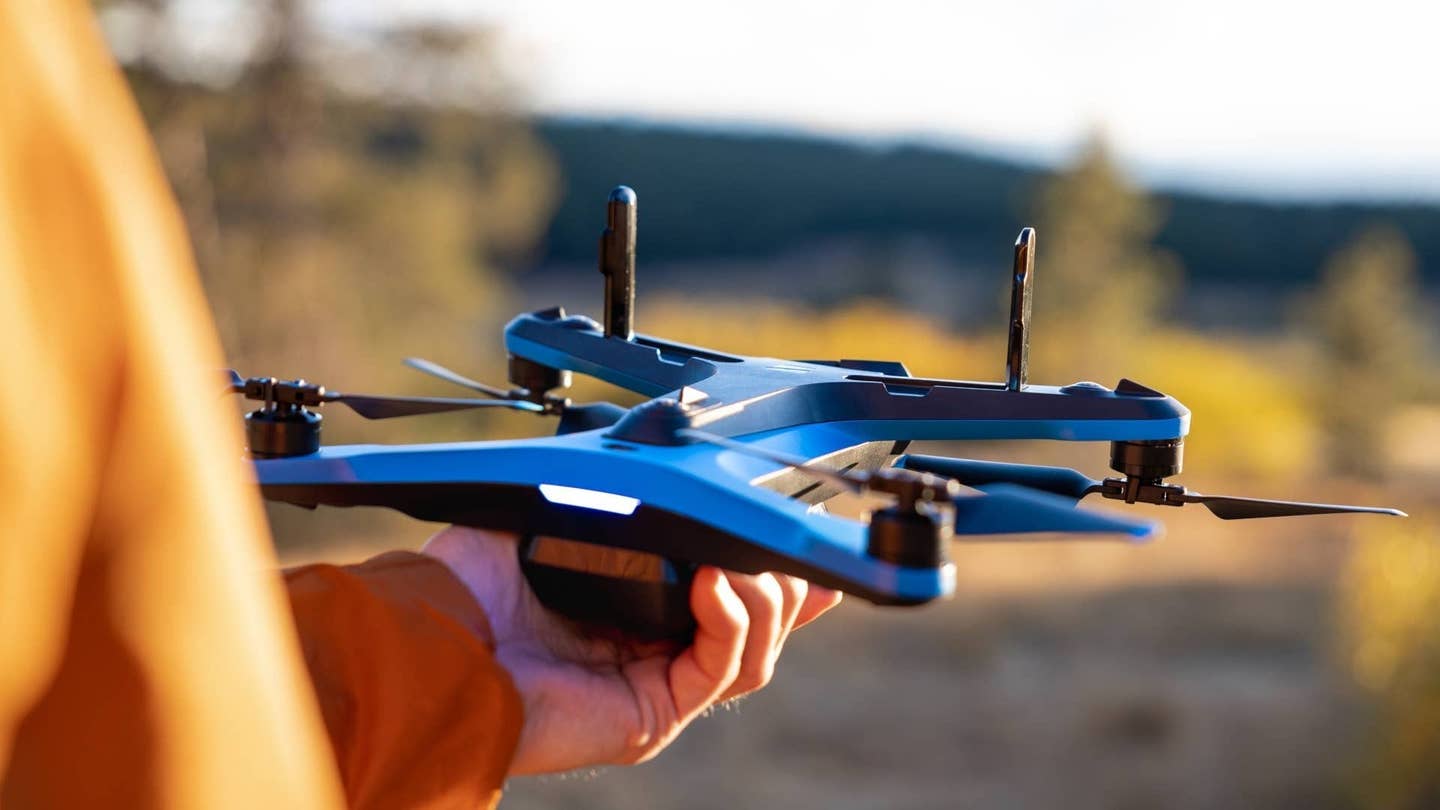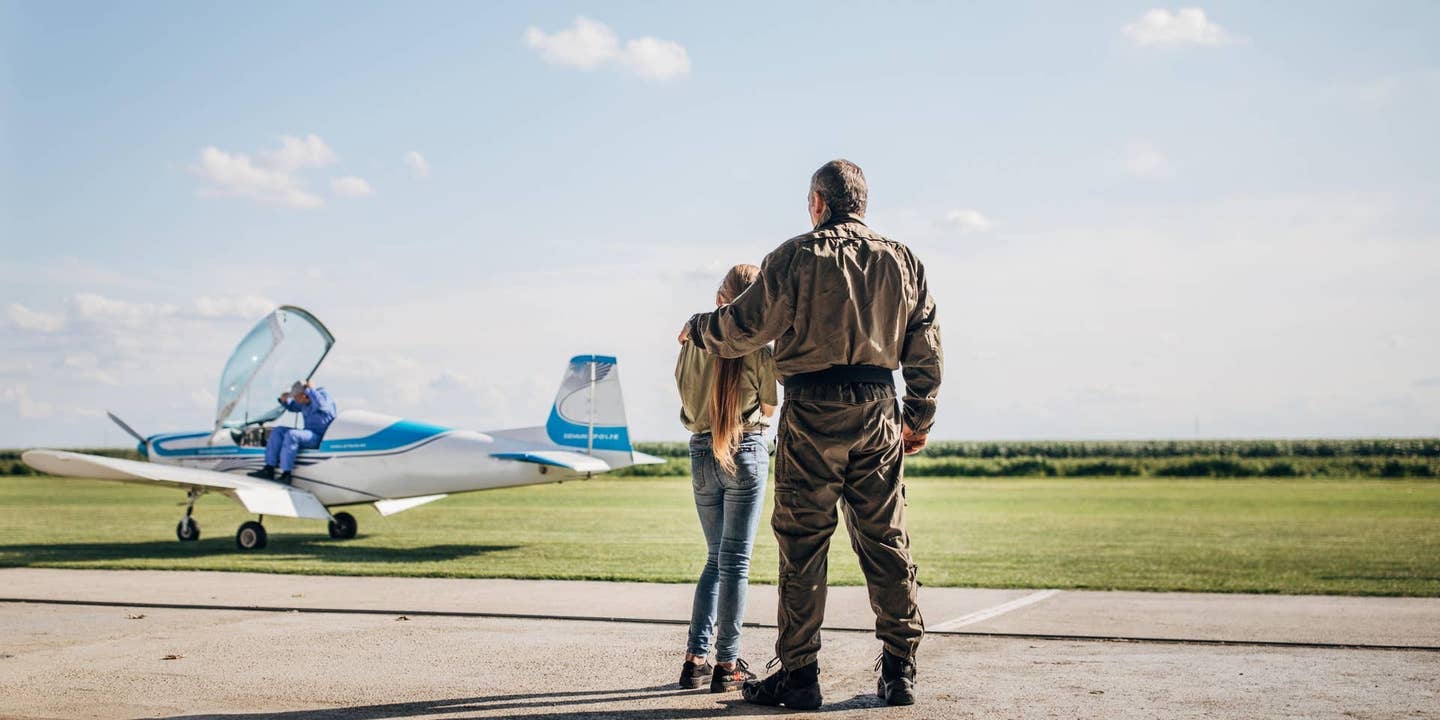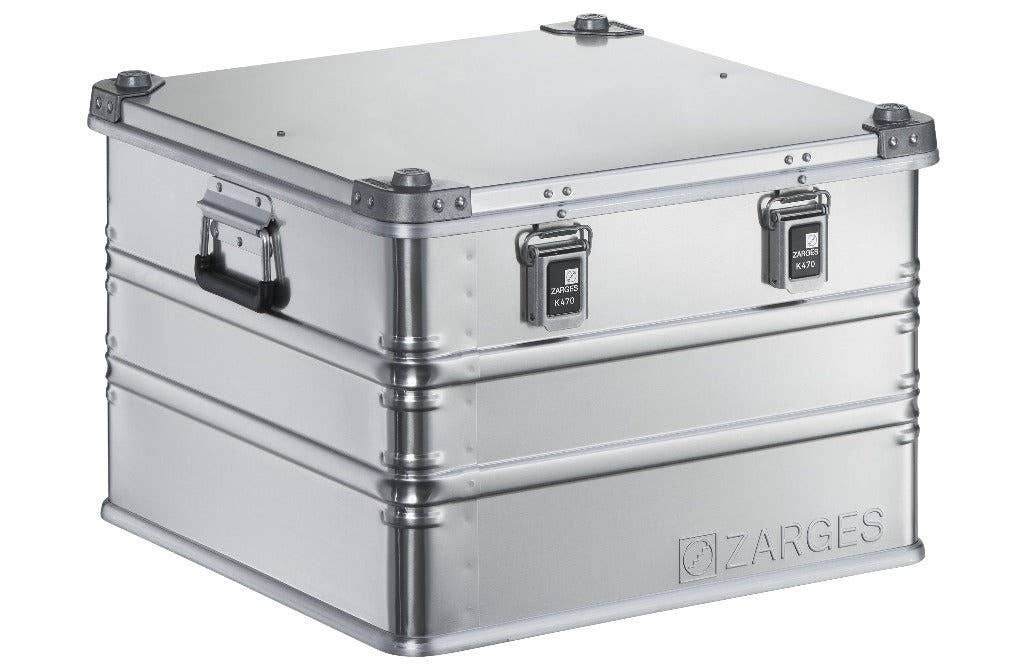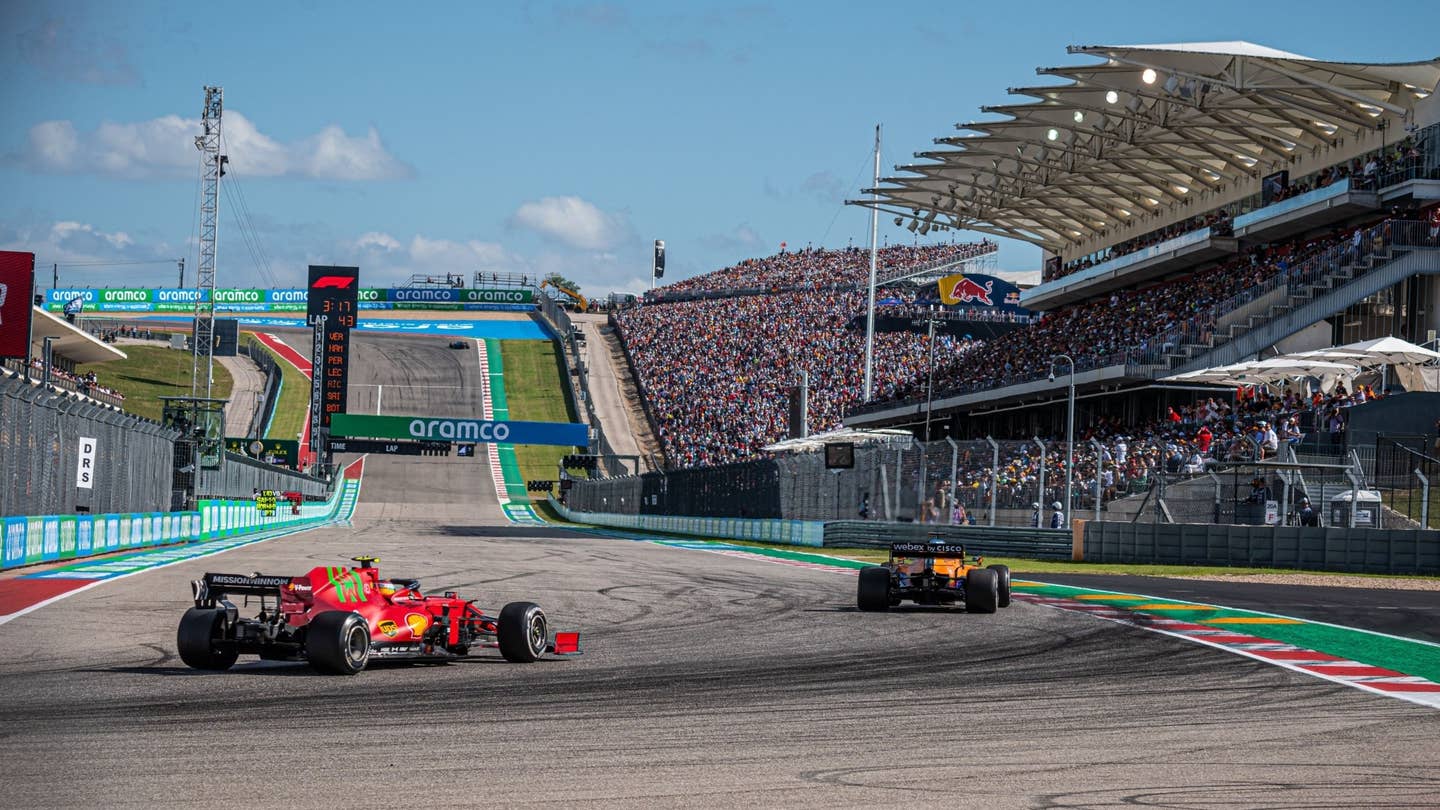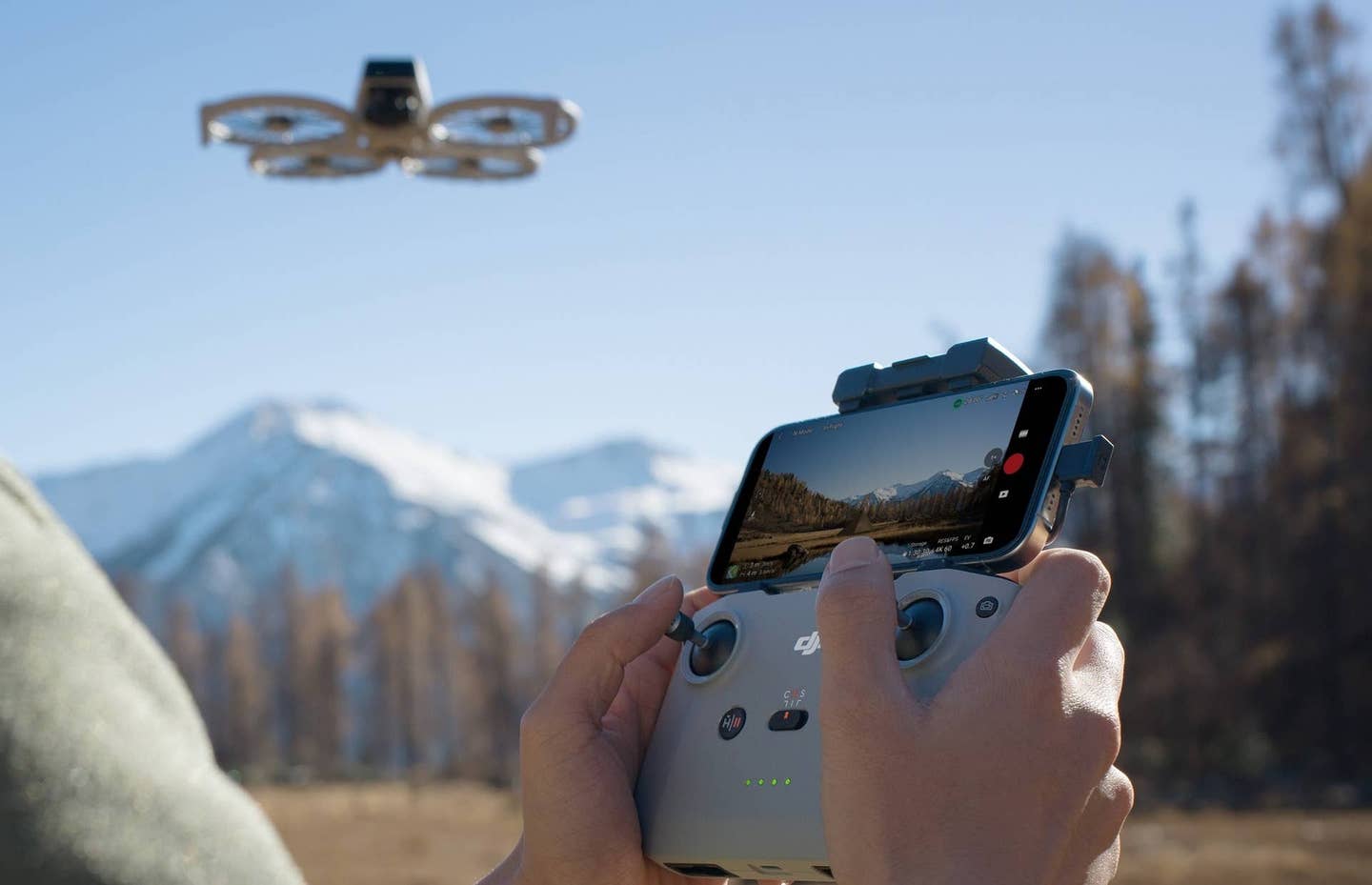Plane Pilots’ Guide to Drone Collision Avoidance Systems
Here are some important tips for pilots toward understanding the risks, rules, and regulations associated with drones.
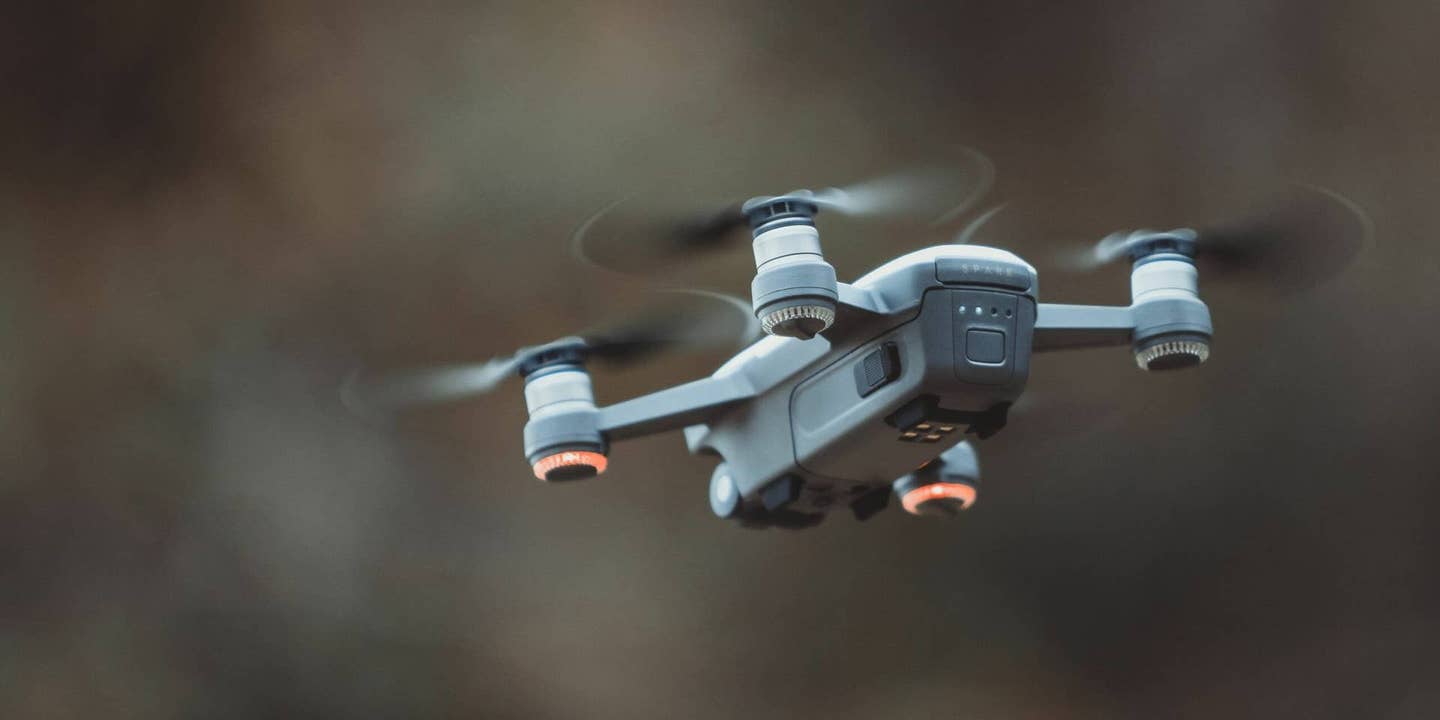
A two-pronged approach of training drone pilots properly and utilizing advanced technology is crucial for preventing drone collisions. [iStock photo]
As an artillery officer in the Marine Corps, I was often responsible for deconflicting artillery fires with military aircraft.
In planning sessions, pilots were understandably concerned anytime they would be sharing the skies with my artillery rounds. I would jokingly assure them that it was a big sky and a little bullet, so they should be fine. Pilots rarely laughed.
Whether it is artillery rounds, birds, or drones, pilots of crewed aircraft must be on the lookout for any foreign object that may collide with them. An otherwise uneventful flight can quickly become a nightmare if a collision occurs.
Of the many dangers out there, drones are quickly rising to the top of most pilot's concerns. With almost 800,000 drones registered in the United States, the chance of an incident occurring is a real possibility. All pilots should understand the risks, rules, and regulations associated with drones. They should also stay informed of the tools and best practices for preventing damage from a drone collision the next time they fly.
Understanding the Risks of Drone Collisions
The number of registered drones continues to grow in the United States. Along with growing numbers of UAVs in the sky, many other factors increase the risk of collisions:
- Increased drone usage
- Lack of regulation and compliance
- Human error
- Low visibility of drones due to their size
- Airspace congestion
Thankfully, the majority of pilots, especially licensed Part 107 pilots, operate drones safely. Commercial drone pilots must pass the FAA test, and many attend training in preparation for the exam. Some of the best online courses include in-depth discussions of operations around crewed aircraft. The few incidents that do occur are typically not the result of operations by Part 107 pilots.
Given the large number of drones registered with the FAA, one would expect collisions to be more prevalent. While some collisions have occurred, they are rare. This is largely due to the quality of drone pilots and the increased number of drones with improved safety features.
To date, there have thankfully been no fatalities as a result of a drone-plane crash. Some estimates, like those of the Flight Safety Foundation, have reported that there have been about two dozen suspected collision incidents since 1997. Here are a few of the more notable ones:
- 2022: Russian drone collision with passenger aircraft near Moscow, causing substantial damage
- 2020: Drone collides with Eurocopter AS 350B-3 in Canada, causing minimal damage
- 2017: Aircraft drone collision with US Army Sikorsky UH-60 Black Hawk helicopter, causing minimal damage
Incidents like these highlight the seriousness of the situation, as any could have resulted in more than just damage to the aircraft.
The main concern with drone collisions is the safety of pilots and their passengers. A drone is capable of causing significant damage to aircraft, potentially leading to catastrophic failure. Additionally, drones can interfere with critical aircraft systems, especially during takeoff and landing.
The potential for costly damages and loss of life means all pilots (crewed and uncrewed) must take the matter seriously.
Legal and Regulatory Framework
Before the FAA finalized the Part 107 on June 21, 2016, drone pilots had little regulation. The Part 107 is designed to allow UAV pilots to benefit from drone technology without placing undue risk on crewed aircraft.
Here are a few examples of Part 107 rules that keep drones from colliding with crewed aircraft:
- Pilots must keep drones within their unaided visual line of sight
- Drones can not be flown higher than 400 feet agl
- Pilots must have a minimum visibility of 3 miles
- Drones must follow the rules associated with controlled airspace, just like crewed aircraft
A recent addition that became a requirement in September 2023 (although not enforced until March 2024) was Remote Identification (RID). RID is a significant regulatory measure that requires drones to broadcast their ID, location, and control station information during flight. Government agencies are able to see the pilot's personal information and the location from which they are flying.
When properly used, RID enhances airspace awareness, allowing the FAA and law enforcement to track drones in real time. This reduces security risks, ensuring compliance.
When the rules associated with the Part 107, including RID, are followed, the airspace becomes much safer. These rules keep drones flying outside of crewed aircraft space and allow for deconfliction when space needs to be shared.
Additionally, commercial drone pilots are required to report incidents to the FAA within ten days. The FAA considers an event reportable if more than $500 of damage is caused or if serious injury to a person, including loss of consciousness, occurs. Reporting helps identify and eliminate risks, ultimately increasing safety for everyone using the National Airspace System (NAS).
The Technology Behind Avoiding Drone Collisions
Rules and regulations are a great foundation to help crewed aircraft pilots avoid collisions with UAVs.
These rules help keep UAV operators flying safely, but what if the operator is untrained or reckless? That's where technology comes in. Many technological advancements aid in avoiding a crash with a drone.
Here are four worth considering:
ADS-B Receivers and Transponders
Most pilots are familiar with Automatic Dependent Surveillance-Broadcast (ADS-B) receivers and transponders. These devices broadcast an aircraft's position, speed, and altitude, allowing other aircraft and air traffic control to monitor their location in real time. ADS-B enhances situational awareness and helps avoid collisions with drones.
Portable Collision Avoidance Systems
Portable collision avoidance systems, such as TCAS (Traffic Collision Avoidance System) and FLARM (Flight Alarm), provide real-time alerts about nearby aircraft and drones. These systems use radar and other technologies to detect potential threats, offering pilots timely warnings to take evasive action.
Tablet-Based Apps and Accessories
Tablet-based apps and accessories have become increasingly popular in recent years. Apps like ForeFlight and Garmin Pilot provide real-time air traffic data, weather updates, and flight planning tools. There are also apps specifically for tracking RID on drones, such as Dronetag. Paired with accessories like portable ADS-B receivers, these apps help ensure each flight is collision-free.
AR Displays for Pilots
Finally, Augmented Reality (AR) displays are an emerging technology for pilots, providing enhanced situational awareness. AR displays overlay critical flight information, including the location of nearby drones, directly onto the pilot's field of view. This technology allows pilots to quickly identify and respond to potential collision threats, improving overall flight safety.
Drone Operator Responsibilities and Preventions
Drone pilots can be broken into two groups: commercial drone pilots (Part 107) and everyone else. In most cases, such as the 2017 collision with a Black Hawk, the pilot was not a professional UAV operator.
Part 107 pilots have a record of operating safely and complying with all laws and regulations. They perform pre-flight checks, read METAR and TAF reports, stay within authorized airspace, and operate within the parameters established by the FAA.
Everyone else may or may not understand how their actions can increase the chance of a collision. The FAA requires non-Part 107 pilots to take The Recreational UAS Safety Test (TRUST), but enforcing this is challenging. Both crewed and uncrewed pilots need to spread best practices and regulations related to operating UAVs to anyone they know looking to fly drones.
One example is understanding and adhering to airspace classifications. For example, trained operators know how to fly in Class C versus Class B. They also understand restricted areas, including around airports and military bases. For those without training in this, apps such as Aloft can help determine whether or not a given area is safe to fly a drone in.
Manufacturers are also helping to avoid collisions. Drone anti-collision lights, GPS, and geofencing technologies installed by the OEMs help prevent collisions. Additionally, many drones have collision avoidance systems with sensors and cameras that help detect and avoid obstacles. These technologies enhance situational awareness and reduce the risk of collisions with crewed aircraft and other obstacles. It should never be forgotten that the best safety measure is the pilot.
Conclusion and Action Steps
A two-pronged approach of training drone pilots properly and utilizing advanced technology is crucial for preventing drone collisions.
Tools such as ADS-B receivers, portable collision avoidance systems, tablet-based apps, and AR displays can help pilots avoid drones near their aircraft. If you are flying without these technologies, you can learn more about them at trusted vendors like Sporty's.
However, no technology can replace an operator flying safely, so training all drone operators is key to preventing accidents. Only when crewed and uncrewed pilots work together toward a common goal of safety can the skies be safe for everyone. If you know a drone operator who needs help, encourage them to register with one of the many online Part 107 courses.
By learning the rules and regulations as well as adopting safety-enhancing technology, crewed and uncrewed pilots can contribute to a safer and more secure airspace for everyone.
For more information on tips on how to handle drones while flying, check out these drone encounter rules.
FAQ
How many drones have collided with aircraft?
Collisions are extremely rare. Some have occurred, such as the September 2017 incident where a drone hit a US Army Sikorsky UH-60 Black Hawk helicopter. According to some estimates, there are around two dozen worldwide.
Do drones have collision avoidance?
It depends on the drone. Many drones now come with collision avoidance systems. Typically, smaller drones, which are designed more for recreation, do not. The best collision avoidance system is the pilot.
Where do most midair collisions happen?
There are too few collisions to support any particular location. Airports tend to be the area with the highest occurrence. This makes sense, given that aircraft landing and taking off are more likely to fly at the same level most drones are flown at.

Sign-up for newsletters & special offers!
Get the latest FLYING stories & special offers delivered directly to your inbox

